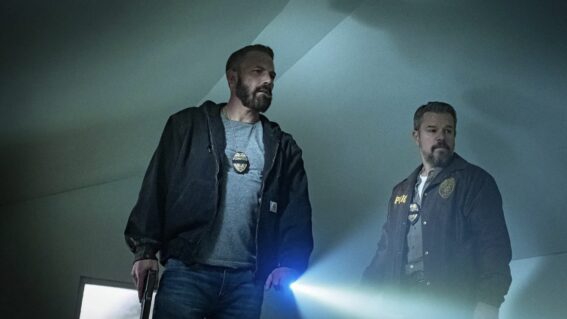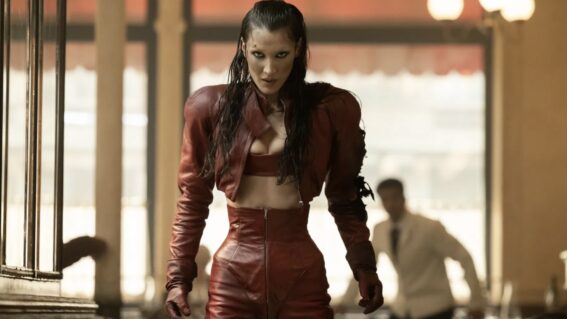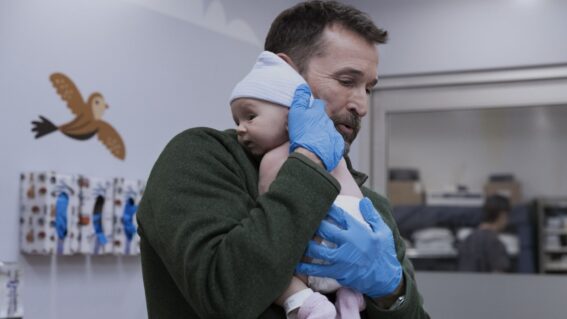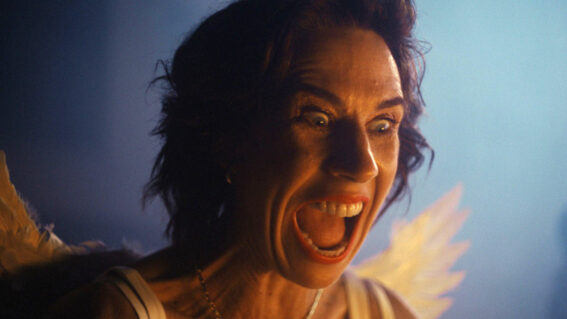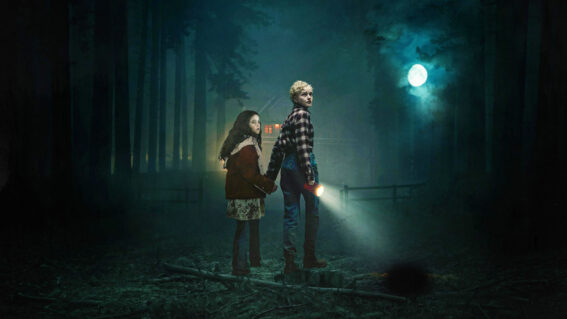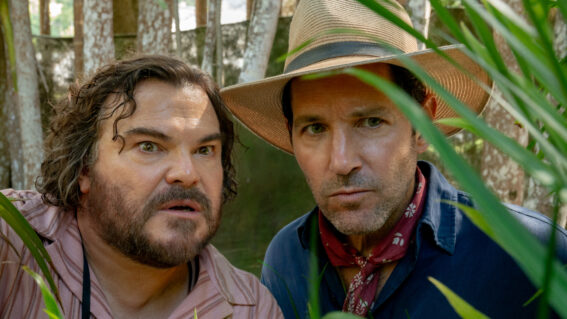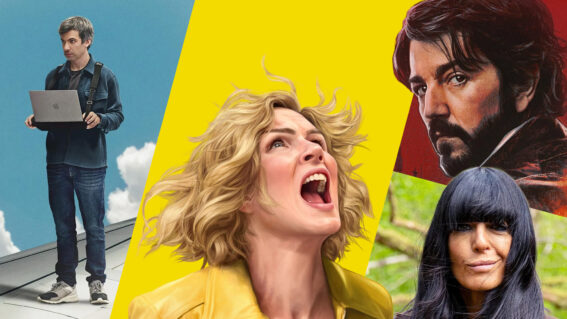Decay and rebirth: the secret to the beautiful look of The Last of Us
The zombie action is spectacular, but visions of nature reclaiming the earth have even more devastating impact.
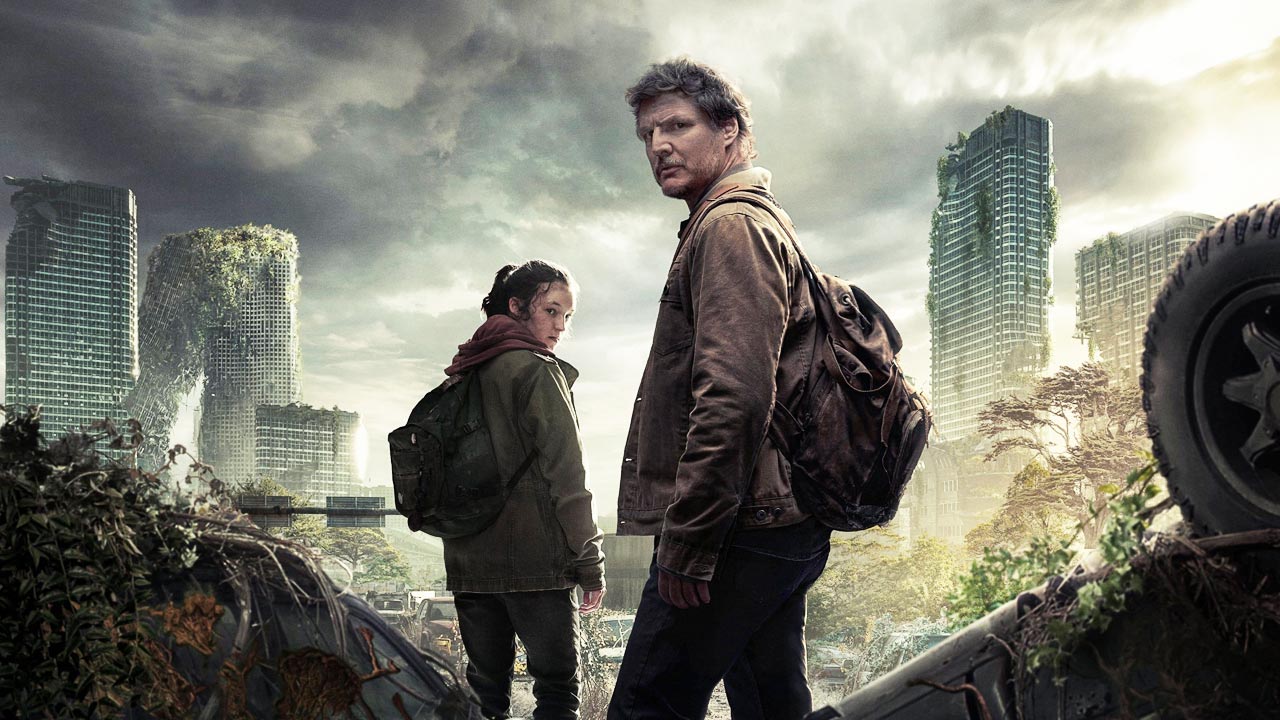
The long-awaited The Last of Us TV adaptation beautifully translates the video game’s aesthetic: a ravishing kind of apocalyptic beauty synonymous with sadness, writes Luke Buckmaster.
The highly anticipated The Last of Us television series is soon to arrive on screens, along with a tsunami of praise triumphing its virtues. To paraphrase Benjamin Franklin: nothing in this world is certain other than death, taxes and HBO’s new production being widely considered the greatest video game adaptation to date. Admittedly that’s not saying all that much, given the genre’s famously problematic history, full of two-bit translations that annoy fans, critics and general audiences alike—drawing a trifecta of bollocking.
The accepted narrative explaining HBO’s success will be that the network listened to the game developers and took their opinions seriously, even enlisting the game’s creator, Neil Druckmann, as the co-creator of the series. Druckmann was paired with Craig Mazin—creator of the sickeningly good, and justifiably acclaimed series Chernobyl, which also revolves around a cataclysmic event associated with great suffering. And this narrative is accurate. The nine-part series is an impressive, vividly detailed adaptation, told with thought and care, full of special effects that provide visual oomph while simultaneously developing the world and escalating dramatic stakes.
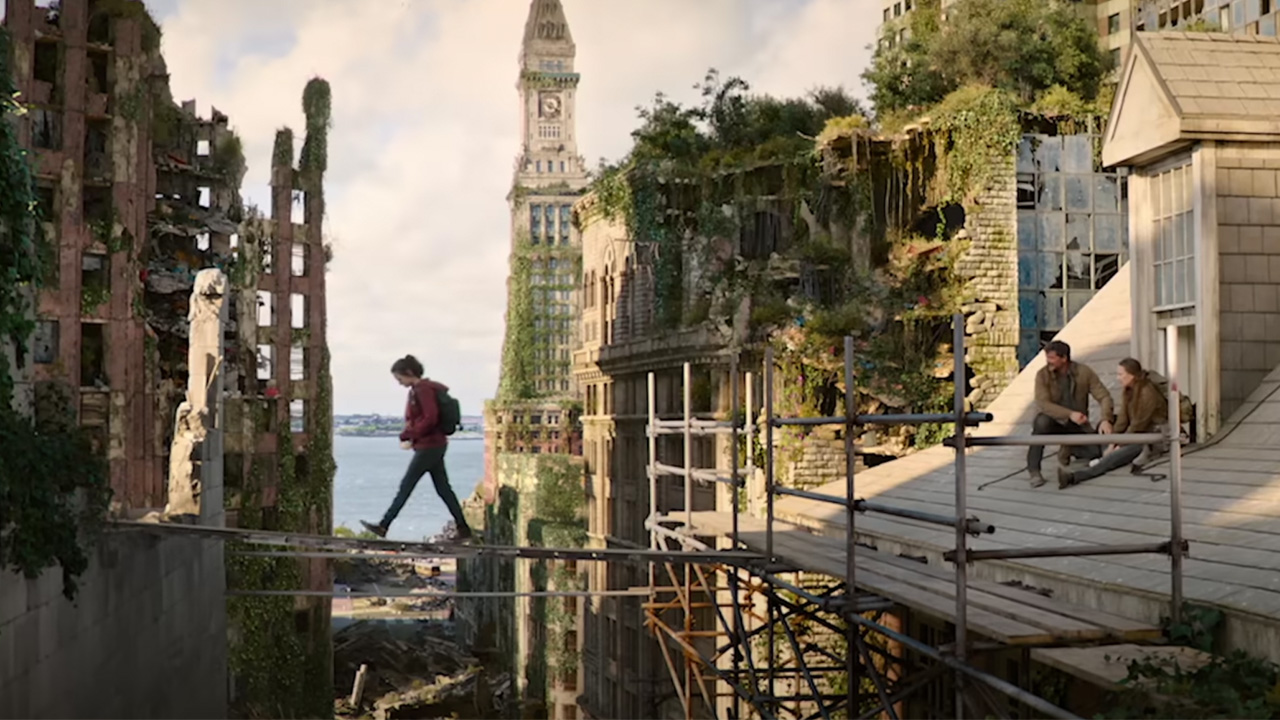
It’s also true, however, that AAA video games have generally become more cinematic over the years, with longer and more nuanced narratives. When the notorious Super Mario Bros movie arrived in 1993, Mario was a glob of pixels on a 16-bit console who moved left and right, collecting coins and whacking his head on boxes that coughed up mushrooms and flowers. There was a (very thin) narrative, but it was nothing like The Last of Us: a long, intricately plotted, morally challenging experience with carefully drawn characters, loads of dialogue, and vividly detailed environments.
The story follows a journey across a ravaged, monster-filled America undertaken by Joel (played in the show by Pedro Pascal), a stoic alpha male, and Ellie (Bella Ramsey), a girl immune to the virus that’s wiped out much of the planet. She’s like the pregnant woman in Children of Men: a presumed scientific impossibility, and a precious commodity, whose life represents hope.
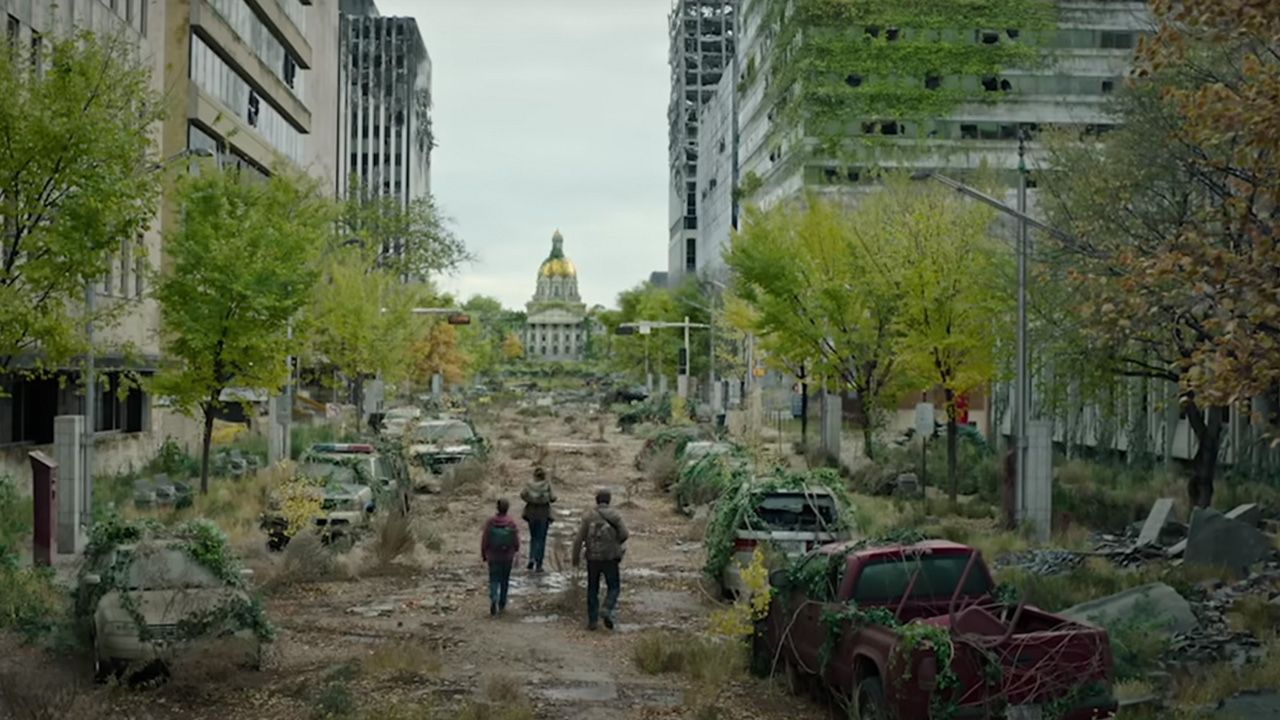
All games provide visual ideas to adapt into movies or shows, but The Last of Us delivered something closer to a blueprint. Rather than posing aesthetic challenges to overcome (like the first-person video game Doom, which was translated into a film that unfolds mostly in third-person perspective), it seemed to cry out for a more literal conversion. Unveiled in late 2021, the series’ original press still (embedded below) generated excitement not because it suggested the filmmakers had envisioned something thrillingly different, but because it indicated they’d closely followed the source material. The still looks just like a scene from the game, depicting Joel and Ellie staring into the distance at a plane wreckage atop a grassy hill, with the camera positioned behind their backs and Joel just off-centre—almost as if he could be navigated by controller.
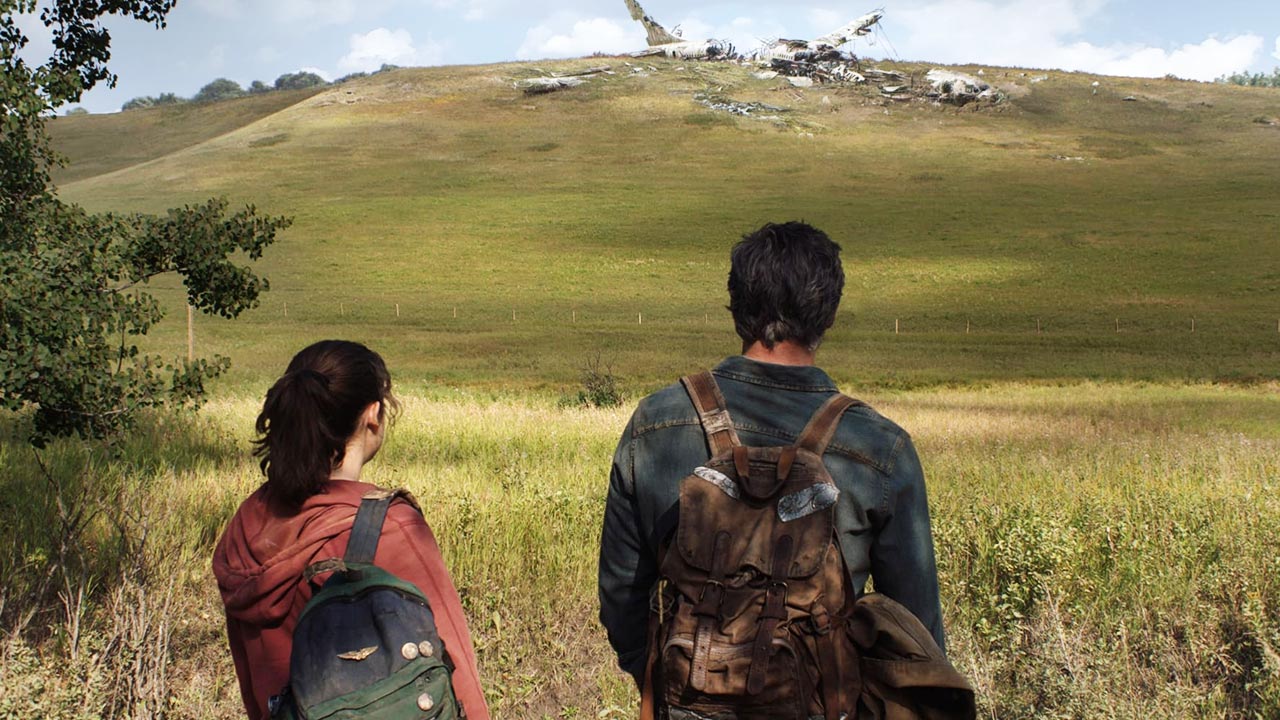
There’s an interesting interplay happening here: movies and shows inspiring the cinematic look of the game, which inspired the cinematic look of the show. This brings us to the core “secret” explaining why The Last of Us—both the game and the series—looks so darn good. The post-apocalyptic future in which the narrative is set relies on an aesthetic that appears at once old, new, beautiful, beleaguered, time-ravaged, dying, reborn. In this world human societies have crumbled, but nature is bouncing back; reclaiming the space. All kinds of greenery—grass, moss, trees, weeds etcetera—encroach on places that once blocked out nature.
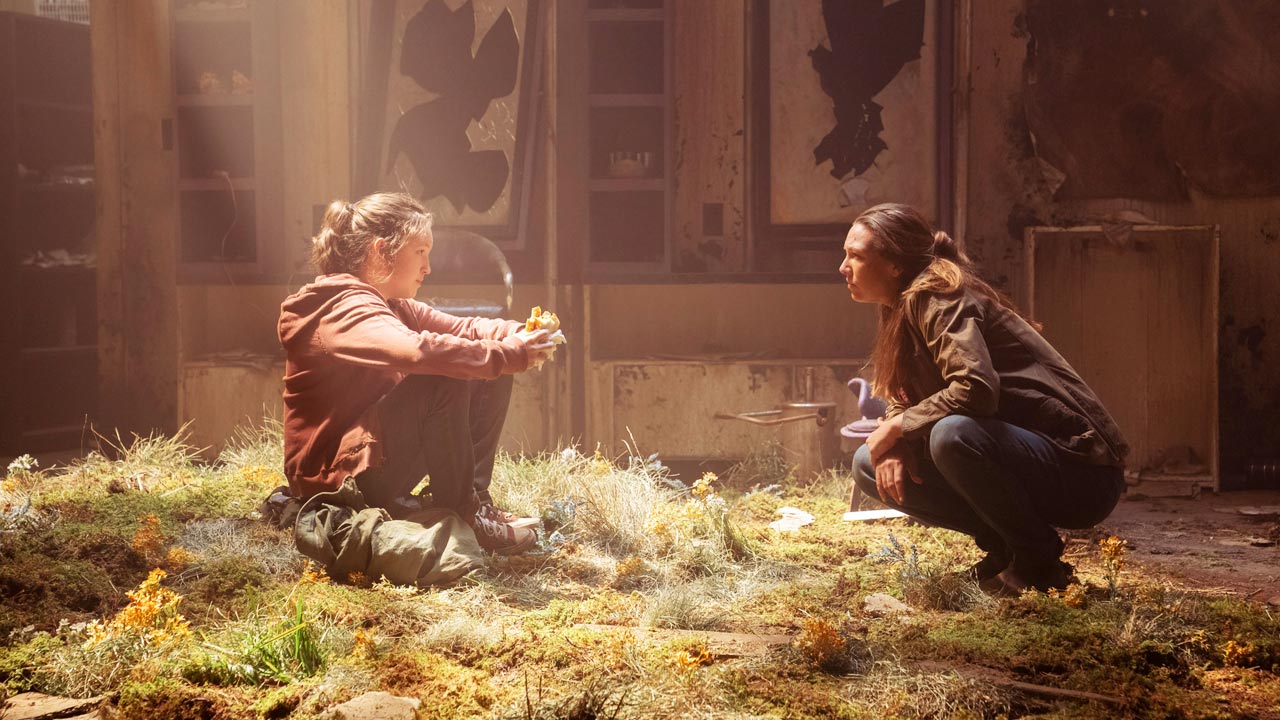
One key image in the first episode is a long shot of the city, depicting its skyscrapers crumbling and falling, the roofs of buildings looking like partially formed forests. Conceptually similar shots, spread throughout the series, never get old. The directors understand their beauty is synonymous with sadness.
They evoke a melancholic feeling that—as I observed in relation to the second The Last of Us video game—is “constantly considering things that are lost and things that once were. Things that have become, with time, withered simulations of their past, broken down and bedraggled, still with enough visual clarity to reflect the life they once had—from couches overcome by grass and moss being reclaimed by Mother Nature, to long-abandoned shops and public spaces.”
This combination of old and new boils down to two things: decay and rebirth. The countless shots depicting buildings and spaces ravaged by time and encroached upon by nature remind us that hope for the world, and hope for humans, are two different things. Most art is human-centric, linking the fate of the world to the fate of humans. The Last of Us rejects this simple correlation, in subtext as well as surface. Visions of hideous zombie-like beasts are spectacular, but images of greenery pushing through cement—and flowers through walls—have more impact.








